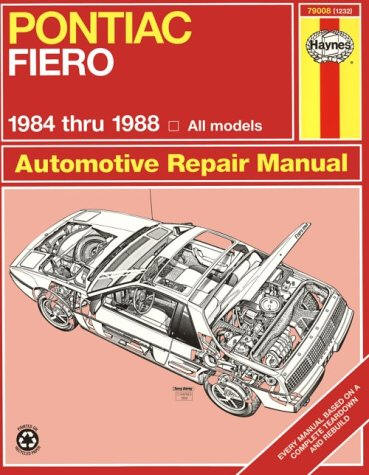Sue's Porsche

Sue's first new car was the Pontiac Fiero... It is still alive and running and being driven by Mitch! Perhaps a little worse for wear but it is a great handler!
Other than funding its unique construction needs, a strict cap was placed on development costs. To meet that challenge, the Fiero's designers and engineers adapted as much hardware as possible from existing GM parts.
The front suspension came from the Chevy Chevette sub-compact, while the rear suspension, four-wheel disc brakes, transmissions (four-speed manual and optional three-speed automatic) and the 92-horsepower 2.4-liter four-cylinder engine, were also borrowed from existing models. Even the outside mirrors were purloined from the Firebird.
Great Car...

With all the necessary components in place, the final assembly process involved fitting the Fiero's 13 separate plastic body panels to the space frame. This involved the use of a computer-operated "mill and drill" machine that positioned the 39 connecting pads used to anchor the parts.
The finished product, which launched in late 1983 and listed for about $8,000 in its most basic form, was rather handsome, not unlike some exotic, out-of-reach European sports car. The Fiero's rich-looking cockpit was equally advanced, with options such as a removable sunroof and form-fitting bucket seats with speakers that were built into the headrests.
The car's good looks and attractive price point were one thing, but disappointment loomed whenever Fiero owners twisted the key. The underpowered four-cylinder powerplant provided tepid performance at best, the suspension and steering were (much) less than precise and the meager stowage area, consisting of a narrow bin positioned behind the motor, was totally inadequate. The engines of some early examples even caught fire.
Nice Car
 To be fair, Pontiac avoided calling the Fiero a sports car and instead touted its thriftiness and value for the money.
To be fair, Pontiac avoided calling the Fiero a sports car and instead touted its thriftiness and value for the money.
The car-buying public didn't seem to mind one way or the other, at least in the Fiero's initial year. Pontiac dealers had received 30,000 orders before a single car had left the plant and most were being sold for the full sticker price or more.
During its sophomore year in 1985, Pontiac added the $14,000 Fiero GT to the lineup, featuring its own nose and a 140-horsepower 2.8-liter V6. In 1986, the GT received fastback styling that seemed to hit the mark, but already there were troubling signs that interest in the plastic sports/commuter thingy was beginning to wane.
Nice Car
 Back in Detroit, the Fiero team knew all-too-well the vehicle's weaknesses and at a cost of $30 million, introduced a number of significant suspension upgrades for 1988. It proved to be too little too late. With sales well below the necessary six-figure mark (fewer than 20,000 were sold in 1987), General Motors ordered a halt to Fiero production.
Back in Detroit, the Fiero team knew all-too-well the vehicle's weaknesses and at a cost of $30 million, introduced a number of significant suspension upgrades for 1988. It proved to be too little too late. With sales well below the necessary six-figure mark (fewer than 20,000 were sold in 1987), General Motors ordered a halt to Fiero production.
The debate rages to this day as to why the Fiero failed. Some blame GM for not allowing it to mature into a lower-priced Corvette rival, while others cite an off-kilter marketing plan that left both sports-car and economy-car camps confused about the automobile's true mission.
But the Fiero's biggest problem was that it was caught in the crossfire between inexpensive, yet highly practical Japanese products and the onset of the minivan craze that began sweeping the nation in 1984, the same year Pontiac's mid-engine fuel-saver was introduced.
After fewer than a half-dozen years, the little car with so many "firsts" under its belt became yet another casualty of changing public tastes and, ultimately, corporate indifference.